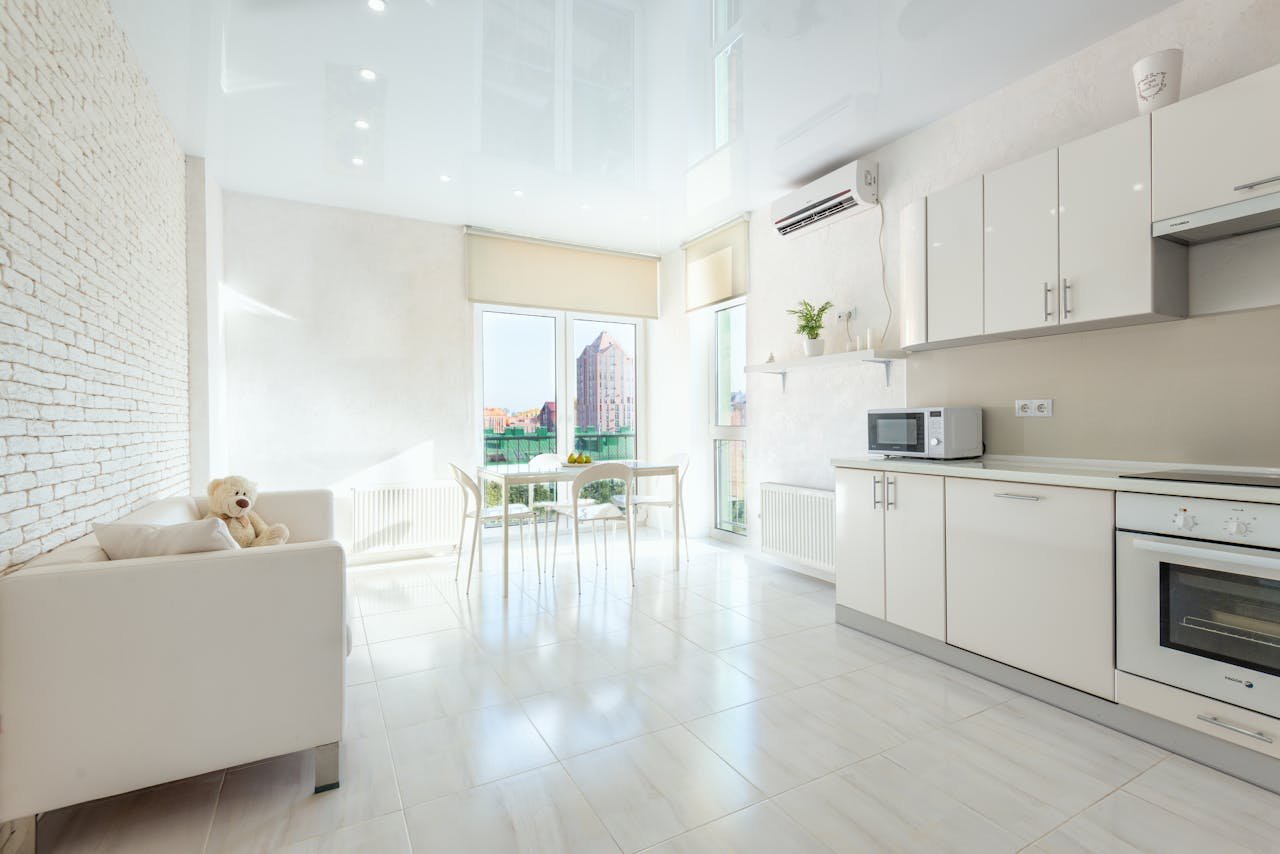After managing residential property operations and consulting on space optimization for over fifty-one years, I’ve discovered that the best microwave ovens for dorms and small apartments represent far more than simple heating appliances—they’re strategic investments in space efficiency and student convenience that most people completely underestimate.
The wrong microwave choice can create ongoing frustration, waste precious counter space, and force expensive replacements when capacity issues become apparent during academic years.
What separates successful microwave investments from disappointing purchases is understanding the relationship between compact design, power efficiency, and user convenience that either enhances or restricts daily dorm living efficiency.
Compact Size Engineering and Space Optimization
The mathematics behind dorm microwave sizing isn’t subjective—dimensional constraints determine whether units fit available space while providing adequate capacity for student meal preparation and quick heating requirements.
The best microwave ovens for dorms and small apartments utilize compact footprints typically measuring 17x12x10 inches or smaller while maintaining 0.7-0.9 cubic foot internal capacity that accommodates standard plates and bowls. Modern compact units incorporate space-efficient design elements including recessed handles and stackable configurations that maximize counter utilization.
What I’ve learned from student housing management is that microwaves exceeding 18 inches in any dimension typically create placement challenges in standard dorm configurations. Smart sizing prioritizes actual space constraints over theoretical capacity because placement flexibility affects both immediate functionality and long-term satisfaction.
Professional space engineering ensures optimal utilization while maintaining adequate cooking capacity for demanding student applications and limited living environments.
Power Efficiency and Heating Performance Standards
Most people underestimate how dramatically wattage affects both heating speed and energy consumption in compact living situations where electrical capacity may be limited and efficiency becomes critical.
The best microwave ovens for dorms and small apartments feature power ratings between 700-900 watts that provide adequate heating performance while maintaining energy efficiency suitable for shared electrical circuits. Quality compact units typically achieve faster heating than expected through efficient magnetron design and optimized chamber geometry.
What separates effective compact microwaves from underpowered alternatives is attention to power distribution and heating patterns that ensure even cooking despite smaller chamber dimensions. Much like how Red Business Trends analyzes efficiency optimization in business operations, microwave performance requires understanding actual heating capabilities rather than theoretical power specifications.
Professional power engineering ensures consistent results while preventing the electrical issues that can compromise dorm safety and building electrical systems.
User Interface Simplicity and Student-Friendly Operation
Interface design determines whether microwaves enhance student convenience or create operational complexity that discourages regular use during busy academic schedules and late-night study sessions.
The best microwave ovens for dorms and small apartments incorporate intuitive controls including one-touch cooking buttons, express heating functions, and clear digital displays that enable quick operation without complicated programming sequences. Modern student-focused models feature simplified interfaces with large buttons and backlit displays that remain visible in low-light conditions.
Quality interface design includes consideration of cleaning accessibility, button durability, and operational feedback that enhances rather than complicates daily meal preparation and snack heating routines. What works consistently across different user profiles is choosing microwaves with straightforward controls rather than complex programming that frustrates tired students.
Professional interface engineering supports both convenience and reliability through user-centered design that adapts to demanding student usage patterns and varied technical comfort levels.
Safety Features and Dorm Environment Compatibility
Safety engineering determines whether microwaves enhance dorm security or create risks in shared living environments where multiple users and limited supervision characterize typical student housing situations.
The best microwave ovens for dorms and small apartments incorporate comprehensive safety systems including child locks, automatic shutoff, and overheat protection that prevent accidents during normal operation by various users with different experience levels. Quality safety features include door interlocks, ventilation systems, and thermal protection that maintain safe operation.
Smart safety planning includes consideration of shared usage, emergency scenarios, and user error prevention that protects both residents and property during daily meal preparation activities. Professional maintenance protocols, similar to those outlined by specialists like Crucial Pets for equipment preservation, ensure optimal performance through consistent safety practices.
Professional safety engineering includes features that support confident operation while preventing the accidents that can compromise dorm safety and student wellbeing.
Noise Control and Quiet Operation Technology
Sound management determines whether microwaves accommodate shared living environments or create disturbances that affect roommate relationships and study environments during operation periods.
The best microwave ovens for dorms and small apartments feature noise reduction technology including sound dampening, quiet operation modes, and muting capabilities that minimize operational disturbance in close-quarters living situations. Advanced models incorporate vibration isolation and precision engineering that reduces both operational noise and end-cycle alerts.
Quality noise control includes consideration of late-night usage, study periods, and roommate courtesy that affects both individual convenience and social harmony in shared spaces. What separates truly quiet microwaves from disruptive alternatives is attention to sound engineering and operational discretion that enables flexible usage schedules.
Professional sound engineering ensures comfortable operation while maintaining the quiet environment essential for successful academic performance and positive roommate relationships.
Durability Engineering and Student Usage Resistance
Construction quality affects both performance longevity and reliability in demanding student environments that include frequent moves, intensive usage, and varying care standards throughout academic periods.
The best microwave ovens for dorms and small apartments utilize reinforced construction including impact-resistant exteriors, durable door mechanisms, and quality control systems that resist wear from frequent transportation and intensive student usage patterns. Quality construction includes consideration of portability requirements, assembly simplicity, and component protection that ensures reliable operation.
Smart durability evaluation includes attention to handle strength, door alignment, and control panel durability that affects both daily reliability and investment protection over multiple academic years. What I’ve observed across different student housing applications is that properly constructed units maintain performance while cheaper alternatives fail under normal student usage.
Professional construction engineering ensures consistent performance while minimizing maintenance requirements and extending appliance lifespan through superior material selection and student-focused design.
Budget Optimization and Student Value Assessment
Price evaluation requires understanding total student value delivery and performance capabilities that determine whether microwaves justify their investment through actual convenience enhancement within typical student budget constraints.
The best microwave ovens for dorms and small apartments represent strategic investments in student convenience and meal flexibility that should provide reliable performance for 4-8 years with proper selection and care. Quality compact microwaves in the $60-200 range typically offer superior long-term value compared to ultra-budget alternatives that may appear adequate but lack durability necessary for student applications.
Strategic investment includes consideration of feature utility, size appropriateness, and reliability factors that enhance rather than compromise student living goals and academic success. When considering design elements that enhance both functionality and value, resources like Red District offer insights into effective product evaluation that balances performance with budget realities.
Smart value assessment prioritizes proven performance over marketing features because reliability and convenience determine both immediate satisfaction and long-term academic year success.
Energy Efficiency and Electrical Compatibility Systems
Efficiency determines whether microwaves integrate seamlessly with dorm electrical systems or create power management issues that compromise both performance and building electrical stability.
The best microwave ovens for dorms and small apartments require energy-conscious operation that balances heating performance with electrical consumption appropriate for shared circuits and limited power availability. Quality efficient models typically consume 8-12 amps during operation while providing adequate heating performance for student meal preparation needs.
Quality efficiency engineering includes consideration of startup power requirements, sustained consumption patterns, and electrical compatibility that prevents circuit overloading during peak usage periods in shared housing environments. What works consistently across different dorm configurations is choosing microwaves with documented efficiency ratings rather than assuming compatibility based on size alone.
Professional efficiency management ensures reliable operation while preventing the electrical issues that can disrupt both individual convenience and building-wide electrical stability during demanding academic periods.
Conclusion
Selecting the best microwave ovens for dorms and small apartments requires understanding the complex relationships between space constraints, power efficiency, and student usage patterns that affect both daily convenience and academic year success.
The most successful microwave investments result from prioritizing proven compact performance and student-focused functionality over marketing claims while ensuring proper integration with existing dorm infrastructure and roommate considerations. The compact microwave market continues evolving with new efficiency innovations, safety features, and student-centered designs that make effective dorm living more accessible than ever before.
Success comes from understanding student patterns and space limitations while investing in appliances and features that deliver consistent performance throughout academic years in support of sustained student success and comfortable dorm living.
What size microwave works best for standard dorm room constraints?
Units measuring 17x12x10 inches or smaller with 0.7-0.9 cubic foot capacity provide optimal balance between functionality and space efficiency for typical dorm configurations. Consider placement options including countertop, shelf, or mini-fridge mounting when evaluating size requirements and available space allocation.
How much power do dorm microwaves need for adequate heating performance?
700-900 watts provides sufficient heating performance for student meal preparation while maintaining compatibility with shared electrical circuits. Higher wattage units may cause electrical issues in older dorm buildings, while lower power models require extended heating times that reduce convenience.
Which safety features are essential for shared dorm living environments?
Child locks, automatic shutoff, and door interlocks prevent accidents in shared spaces with multiple users. Look for overheat protection and ventilation systems that maintain safe operation. Safety features protect both individual users and roommates while preventing property damage and liability issues.
How important are quiet operation features for dorm microwave selection?
Quiet operation is crucial for maintaining roommate relationships and enabling flexible usage schedules during study periods. Look for sound dampening, muting capabilities, and vibration isolation that minimize operational disturbance. Noise control enables late-night usage without disrupting academic activities or sleep schedules.
What’s the realistic budget range for quality dorm microwaves?
Quality dorm microwaves in the $60-200 range provide superior construction and features for demanding student applications. Consider durability, safety features, and size compatibility rather than initial price alone. Strategic investment in proven quality prevents replacement costs while enhancing student convenience throughout academic years significantly.

